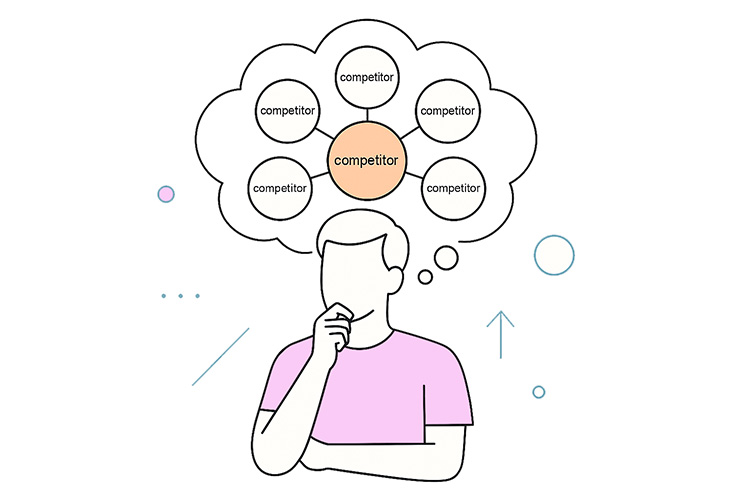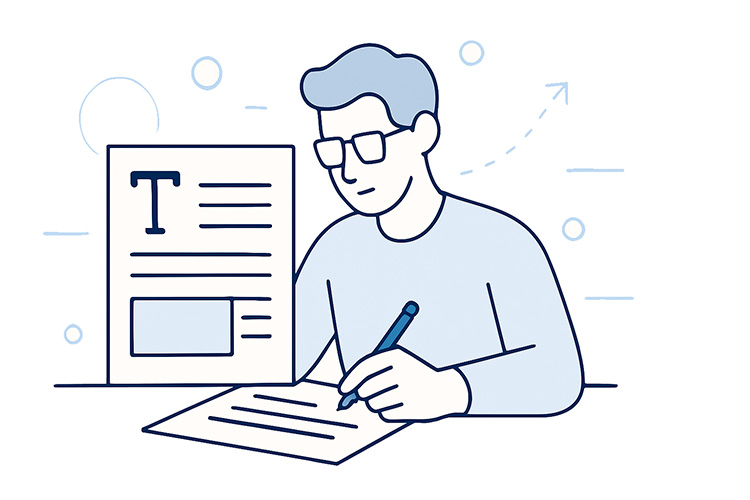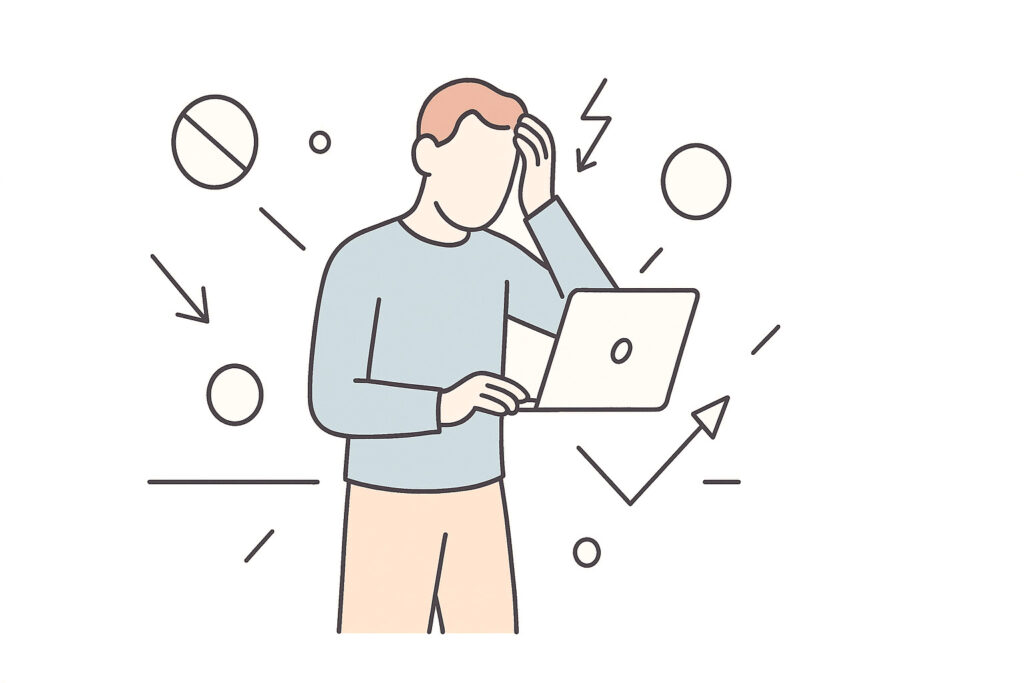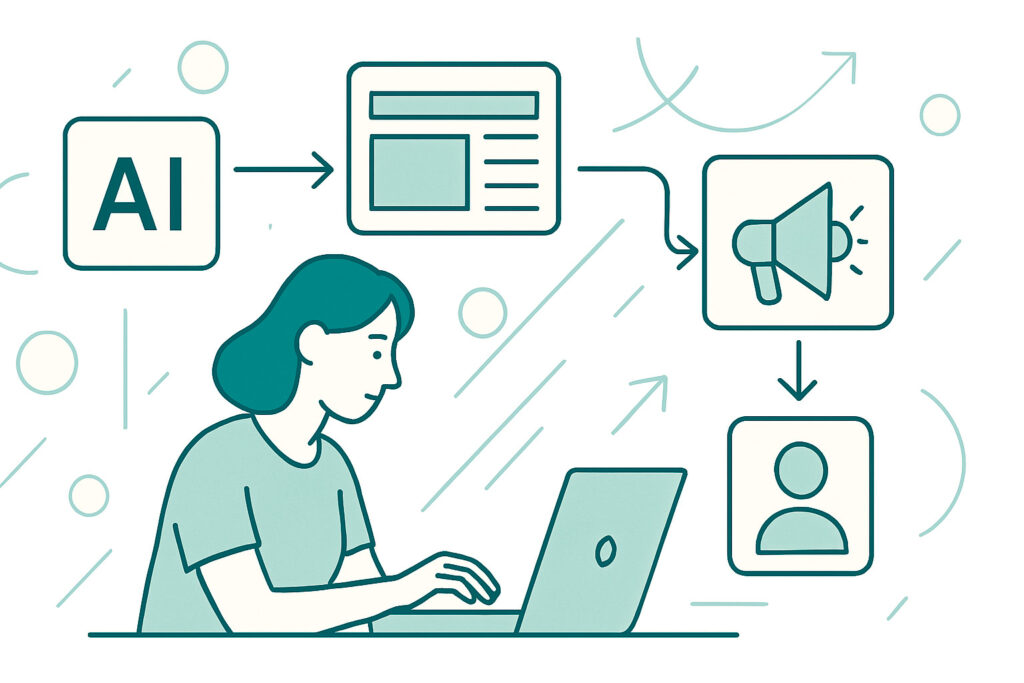As an early-stage founder, you’ve probably heard the term “buyer persona” thrown around in countless startup conversations. But here’s the reality: most founders rush into building their product without truly understanding who their buyer persona is. This critical oversight often leads to products that nobody wants to buy, marketing that falls flat, and validation efforts that miss the mark entirely.
Understanding your buyer persona isn’t just another business school concept—it’s the foundation that determines whether your startup will thrive or become another statistic. When you know exactly who you’re building for, every decision becomes clearer, from product features to pricing strategies to marketing messages.
What is a Buyer Persona and Why It Matters
A buyer persona is a detailed, semi-fictional representation of your ideal customer based on real data and research. Think of it as creating a character in a story, but this character represents the real people who will actually purchase your product. Your buyer persona includes demographic information, behavioral patterns, motivations, goals, pain points, and decision-making processes.
Unlike a simple customer description, a buyer persona goes deep into the psychology of your customer. It answers questions like: What keeps them awake at night? What does success look like to them? How do they prefer to consume information? What objections do they have to solutions like yours?
For early-stage founders, your buyer persona serves as your North Star during the validation phase. It helps you focus your limited resources on the right audience, ask better questions during customer interviews, and build features that actually matter to your future customers.
Buyer Persona vs. Ideal Customer Profile: Understanding the Key Differences
Many founders confuse buyer personas with Ideal Customer Profiles (ICPs), but they serve different purposes in your validation journey. Understanding this difference will save you from targeting the wrong people with the wrong message.
Your Ideal Customer Profile focuses on the company or organization level. It describes the characteristics of businesses that are most likely to buy your product, such as company size, industry, revenue, location, and technology stack. The ICP answers the question: “What types of companies should we target?”
Your buyer persona, on the other hand, focuses on the individual person within that company who will actually make or influence the purchasing decision. It describes their role, responsibilities, challenges, goals, and personal characteristics. The buyer persona answers: “Who within our target companies should we be talking to?“
For example, your ICP might be “SaaS companies with 50-200 employees in the fintech industry,” while your buyer persona could be “Sarah, the VP of Operations who’s been tasked with improving team productivity while managing a tight budget and skeptical executives.”
Both are essential for successful validation, but they guide different aspects of your strategy. Your ICP helps you identify which companies to approach, while your buyer persona helps you craft the right message and build the right solution for the right person.
Building Your First Buyer Persona: Where to Start
Creating your buyer persona starts with data, not assumptions. Too many founders build personas based on who they think their customers are, rather than who they actually are. This approach leads to validation efforts that confirm biases rather than uncover truths.
Begin by talking to people who have the problem you’re trying to solve. If you don’t have existing customers yet, find people who are currently using alternative solutions or manual processes to handle the challenge your product addresses. These conversations should be exploratory, not sales pitches.
During these initial conversations, focus on understanding their current situation rather than pitching your solution. Ask about their daily routines, biggest frustrations, current tools, and what they’ve tried in the past. Pay attention to the language they use to describe their problems—this will become crucial for your marketing later.
Read more: The Power of User Interviews in SaaS MVP Validation
Document everything you learn, looking for patterns across multiple conversations. Notice which pain points come up repeatedly, what language people consistently use, and which solutions they’ve already attempted. These patterns will form the foundation of your buyer persona.
Remember that you might discover multiple buyer personas during this process. Many products serve different types of users, each with distinct needs and decision-making processes. That’s perfectly normal, but start by focusing on one primary persona to avoid spreading yourself too thin during early validation.
Identifying Your Buyer Persona’s Pain Points and Motivations
Understanding pain points goes beyond surface-level complaints. Your buyer persona experiences different layers of pain, and each layer requires a different approach during validation and positioning.
The Three Layers of Pain Points in Your Buyer Persona
Surface-level pain points are the obvious problems your buyer persona complains about. These might be things like “our current software is too slow” or “we spend too much time on manual processes.” While these are important, they don’t usually drive purchasing decisions by themselves.
Deeper pain points relate to the impact of these surface problems on your buyer persona’s success and well-being. For instance, slow software might mean they can’t meet important deadlines, which makes them look bad to their boss, which threatens their job security. This deeper layer is where real motivation lives.
The deepest pain points often connect to personal fears and aspirations. Your buyer persona might fear being seen as incompetent, missing out on a promotion, or letting their team down. They might aspire to be recognized as innovative, to advance their career, or to make their team’s life easier.
During your validation conversations, dig into these layers by asking follow-up questions. When someone mentions a problem, ask how it affects their work, their team, and their personal goals. Ask about the consequences of not solving this problem and what success would look like if it were resolved.
Uncovering the Hidden Motivations Behind Your Buyer Persona’s Decisions
Understanding motivations works similarly. People are motivated by avoiding pain and achieving gains, but these motivations operate at different levels. Some motivations are professional (hitting targets, getting promoted, making processes more efficient), while others are personal (reducing stress, gaining recognition, feeling competent).
The most powerful buyer personas capture both types of motivations because purchase decisions often involve emotional and rational factors. Your buyer persona might rationally know that your solution will save time and money, but they also need to feel confident that choosing your product won’t make them look foolish to their colleagues or boss.
Social motivations also play a crucial role in many purchasing decisions. Your buyer persona might be motivated by the desire to be seen as innovative, to keep up with industry trends, or to avoid being left behind by competitors. They might also be influenced by what their peers are doing or what industry leaders recommend.
To uncover these deeper motivations during validation interviews, ask about past decisions your buyer persona has made. When they describe a recent purchase or major change they implemented, ask what drove that decision beyond the obvious business benefits. Ask about their concerns when making that choice and what success looked like afterward.
Pay attention to the language people use when describing their ideal outcomes. Words like “finally,” “freedom,” “control,” and “confidence” often signal deeper motivations beyond surface-level benefits. When someone says they want to “finally get control of our data,” they’re expressing a deeper need for security and competence, not just a technical requirement.
Understanding these layered motivations helps you position your solution in ways that resonate emotionally while still addressing rational concerns. It also helps you identify the right triggers for your marketing messages and the best ways to present your value proposition during validation tests.
Mapping Your Buyer Persona’s Decision-Making Process
Every buyer persona follows a decision-making journey when considering new solutions, and understanding this journey is crucial for effective validation. This process isn’t always linear, and different personas follow different paths, but identifying the general pattern helps you engage at the right moments with the right approach.
The journey typically starts with problem recognition. Your buyer persona realizes that their current situation isn’t acceptable and needs to change. This recognition might be triggered by a specific incident, a change in company priorities, or the accumulation of frustrations over time. Understanding what triggers this recognition helps you identify when prospects might be ready to consider your solution.
Next comes information gathering. Your buyer persona starts researching potential solutions, talking to colleagues, reading reviews, and comparing options. During this phase, they’re forming opinions about what good solutions look like and developing criteria for evaluation. This is where your validation efforts can provide tremendous insights into what information they seek and how they evaluate options.
The evaluation phase involves narrowing down options and deeper investigation of potential solutions. Your buyer persona might request demos, ask for references, or run pilot programs. They’re not just evaluating features—they’re assessing fit with their organization, implementation complexity, and likelihood of success.
Finally comes the decision phase, where your buyer persona must get approval (if they’re not the final decision maker) and move forward with implementation. Even after choosing a solution, they often face internal resistance, budget constraints, or competing priorities that can derail the process.
During validation, map out this journey for your specific buyer persona. Ask about recent technology purchases they’ve made, how they typically evaluate new tools, who else gets involved in decisions, and what factors ultimately drive their choices.
Refining Your Buyer Persona Based on Market Feedback
Your initial buyer persona is a hypothesis that needs constant refinement based on real market feedback. As you conduct more interviews, engage with potential customers, and test your assumptions, you’ll discover aspects of your buyer persona that were wrong or incomplete.
Create a systematic process for collecting and analyzing this feedback. After each customer interaction, note any insights that confirm or challenge your current buyer persona. Pay special attention to surprises—moments when people respond differently than you expected or express needs you hadn’t considered.
Look for patterns in the feedback that suggest your buyer persona might be too broad or too narrow. If you’re finding significant variation in responses within what you thought was a single persona, you might need to split it into multiple, more specific personas. Conversely, if you’re not finding enough people who match your persona, you might need to broaden your definition.
Update your buyer persona regularly, but don’t change it based on every single piece of feedback. Look for consistent patterns across multiple interactions before making significant adjustments. Document these changes and the reasoning behind them, so you can track how your understanding evolves over time.
As your buyer persona becomes more refined, use it to guide your validation experiments. Test specific assumptions about their preferences, decision-making criteria, and willingness to pay. Design experiments that help you understand not just what they say they want, but what they actually do when faced with real choices.
Using Your Buyer Persona to Guide Product Validation
Once you have a solid understanding of your buyer persona, use this knowledge to design more effective validation experiments. Your persona should influence everything from which features to build first to how you position your solution in the market.
Prioritize features based on your buyer persona’s most critical pain points and workflows. Instead of building features that sound impressive, focus on solving the problems that cause your persona the most frustration or have the biggest impact on their success. This approach helps you create a minimum viable product that actually provides value to real users.
Use your buyer persona’s language and concerns when testing your value proposition. If your persona describes their problem using specific terminology, use that same language in your marketing materials and validation tests. If they express specific concerns about security, cost, or implementation complexity, address these concerns directly in your positioning.
Design validation experiments that match your buyer persona’s preferences and constraints. If your persona is extremely busy and unlikely to spend 30 minutes on a demo, test whether they’ll engage with a 5-minute video instead. If they prefer to try before they buy, focus on creating trial experiences rather than just collecting email addresses.
Test your assumptions about what your buyer persona values most in a solution. You might think they care most about features, but they might actually care more about support, implementation ease, or integration capabilities. Create experiments that force people to make trade-offs between different aspects of your solution.
Common Buyer Persona Mistakes to Avoid
Even well-intentioned founders make predictable mistakes when developing their buyer persona. Avoiding these pitfalls will save you time and help you build more accurate personas that actually guide effective validation.
- The most common mistake is creating personas based on assumptions rather than research. Many founders develop detailed personas before talking to a single potential customer, then spend their validation efforts trying to confirm these assumptions rather than discovering the truth. Always start with research, not assumptions.
- Another frequent error is making personas too generic or too specific. Generic personas like “small business owners” don’t provide enough guidance for validation or product development. Overly specific personas like “left-handed marketing directors at SaaS companies in Austin” might be too narrow to build a viable business around. Find the right level of specificity that provides clear guidance without being impossibly restrictive.
- Many founders also focus too much on demographic information and not enough on psychographic factors. While it’s useful to know your buyer persona’s age, location, and company size, their motivations, fears, and decision-making processes are usually more important for validation and marketing.
- Don’t assume that your buyer persona and your user persona are the same person. In many B2B situations, the person who uses your product daily is different from the person who decides to purchase it. Both perspectives matter, but they require different validation approaches.
- Finally, avoid the mistake of treating your buyer persona as static. As you learn more about your market and as market conditions change, your understanding of your buyer persona should evolve. Regularly revisit and update your personas based on new information and feedback.
Key Takeaways
- Buyer persona is your validation compass: A detailed buyer persona guides every aspect of your validation process, from which questions to ask to which features to build first.
- Research beats assumptions every time: Build your buyer persona through real conversations with potential customers, not through brainstorming sessions or demographic guesswork.
- Buyer persona differs from Ideal Customer Profile: ICP focuses on company characteristics while buyer persona focuses on individual decision-makers and influencers.
- Pain points have layers: Surface complaints matter less than deeper impacts on your persona’s success, reputation, and personal well-being.
- Map the decision journey: Understanding how your buyer persona evaluates and purchases solutions helps you engage at the right moments with the right approach.
- Use persona language in validation: Test your value proposition using the exact words and concerns your buyer persona expresses during interviews.
- Avoid demographic obsession: Psychographic factors like motivations and fears usually matter more than age, location, or company size for validation purposes.
- One persona to start: Focus on one primary buyer persona during early validation to avoid spreading resources too thin across multiple target audiences.
- Continuous refinement is essential: Update your buyer persona regularly based on market feedback, but look for patterns across multiple interactions before making changes.
- Test assumptions, don’t just collect opinions: Design validation experiments that reveal what your buyer persona actually does, not just what they say they want.




